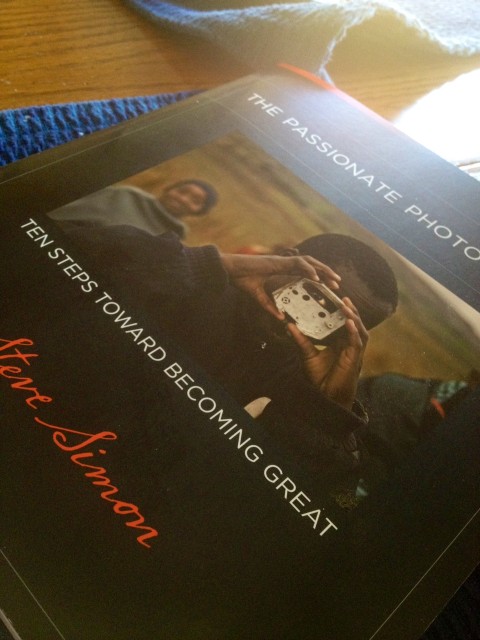When things remain the same, in a state of stasis, there’s no pull in any direction for worse or better. Yes. There are some things where you want the stability of stasis–your house’s foundation. But in a job, how many roles thrive on stasis, things inactive? Yes, harmony is good, but if inactive for too long, does a person really grow? Over time, they’ll seek out actions to remain in harmony, or stable, not really growing or changing or stretching themselves to be better. And that’s what mediocrity is–just ok.
Author: Patrick
-
Looking for treetops or scouring for ground paths
When lost in the woods, do you look for the sky amongst the treetops or do you scour the ground for worn paths?
You’ll need both, to get a sense of direction and to get your footing as your orient yourself.
Communicating’s the same way. You’ll need some higher level goals, supported by details to get to the point.
-
A concert on the diamond

There’s something to the first baseball game attended for the season. A concert on a diamond field, underneath bright lights. Instrumental, a bat, ball and glove provide the rhythm to the crowds matching cadence. Tension rises with each fly ball. Drama arises as base runners stand closer to home. Each swing of the bat brings surprises. Each at bat, a song. Each inning, a run in the setlist. The end of the game is rarely set. -
Bell Labs and innovation
Bell Labs brought us into the future, making science fiction science fact. This is all due to forcing people to interact.
ONE element of his approach was architectural. He personally helped design a building in Murray Hill, N.J., opened in 1941, where everyone would interact with one another. Some of the hallways in the building were designed to be so long that to look down their length was to see the end disappear at a vanishing point. Traveling the hall’s length without encountering a number of acquaintances, problems, diversions and ideas was almost impossible. A physicist on his way to lunch in the cafeteria was like a magnet rolling past iron filings.
This comes from John Gertner’s forthcoming book, [amazon_link id=”1594203288″ target=”_blank” ]The Idea Factory: Bell Labs and the Great Age of American Innovation[/amazon_link]
-
Review of Doxie Go scanner
It seems too good to be true, a wireless, portable scanner that can send documents to your computer or iOS device. Perfect for one’s office within a Starbucks. Kind of.
Measuring a foot long, two inches tall and about 3 inches deep, weighing in at less than a half a pound, the Doxie Go is definitely portable. It powers on to a default scan mode of 300 dpi and can be toggled to 600 dpi, if needed. The power button can easily be erroneously pushed, too. Paper (photos, too) get scanned face side up, and the scanner gently pulls the item through, saving the scanned item within its on board memory or an SD card that you can add. The scanner seems fickle when pulling the item through. Â If the item isn’t lined up perfectly, or you hold on to the paper a moment more, the Doxie Go doesn’t scan. Also, if the paper goes in angled or as it goes through and the paper catches on a random object on your desk, the resulting scan is a trippy blur of digital LSD. And don’t even bother with wrinkled or worn paper–vending machines take crumpled money better. Ideally, you’re scanning a relatively flat piece of paper and you either have a very clean desk or surface to scan on or you guide the paper through, catching it so it doesn’t get caught on any stray pens or keyboard.
The catch, for wireless scanning, is you have to add the wireless capability yourself with an [amazon_link id=”B004U5QR62″ target=”_blank” ]Eye-Fi wireless SD card[/amazon_link]. So in a sense, it is wireless, but to get the scans off it, out of the box, it’s not.
Oh. OK.
Otherwise, to get your scans off the device, you must connect the Doxie to your computer via a mini USB cable,use a thumb drive, or, in the case of non-Eye-Fi SD cards, a memory card reader. Then, to do anything with the scans, processing through the Doxie software is required.
The software is free and actually pleasant to use. Â Before your first use, the Doxie requires a setup procedure. To note, the Doxie Go I received needed a full charge before using. Setup is painless. To import the scans, select import, and the scans will be moved to your computer within a Doxie application directory.
The quality of the scans is quite good at 300 dpi, usable and the equivalent of a very good, clean fax machine. Scans can be saved to JPG, PNG, PDF, PDF with OCR (object character recognition) in black and white or color. Images scanned OK to good. Â Scan images that have a purpose, e.g. labels, clips from magazines, and don’t necessarily have to be reproduced.
Each scan can be tweaked for clarity and contrast via several sliders (see screen shot below). A neat feature, to group scans, like a 10 page legal form, you select the 10 related pages (make sure they’re in the order you want them). One lacking feature is the ability to zoom in on a document. Legal forms look the same, and distinguishing them was a challenge in Doxie’s software.
Battery life seemed to be less than I expected. Â I’d only get about two dozen scans out of it across several weeks. It comes with a mini USB cable, carrying case, which is a black bag, a calibration card, a guide in which to place 4″x6″ images and some random dongle that I have no clue as to what its purpose is. Â I never go the Eye-Fi to work properly with the Doxie Go, despite several attempts. If Eye-Fi can put a wireless transmitter in something the size of an SD card, why couldn’t the engineers at Apparent put a wifi transmitter on their device to begin with? Would it really raise the price more than the additional $80 it costs for the Eye-Fi?
If you’re regularly out of your office and need to scan a document or three, the Doxie Go will work. Pass on it, if your multifunction printer already has this capability or own a flatbed scanner.
-
Book review: The Passionate Photographer by Steve Simon
Steve Simon’s book, [amazon_link id=”0321719891″ target=”_blank” ]The Passionate Photographer[/amazon_link], covers photography as more than a hobby. Â Broken into 10 chapters, he goes from identifying one’s desire to take photographs to using that desire to share a vision. In between, basic technical issues are discussed related to gear, f-stops, shutter speed and ISO as well as elementary composition techniques.
Throughout, he intersperses stories and quotes from other photographers, both historical and contemporary. While some photo books only use the authors images, Simon uses others’ images to illustrate points. Each chapter has an assignment for the reader to attempt and how to assess their ability. Â Also, Simon uses personal stories to cap each chapter in a “lesson learned”.
For beginners, Chapter 2, about practice and persistence, and Chapter 3, about ways to keep seeing the world anew will offer the best value. Chapter 6, about how to see light, really shows how to “see” an image–light and contrast creating interesting shapes and forms that are engaging and pleasing to the eye. Chapter 9, details how to go about creating a photo project and executing it, may help all those with ideas of “this would be a cool thing to do…”
[amazon_link id=”0321719891″ target=”_blank” ]The Passionate Photographer[/amazon_link]Â is a well sourced and well written book. Â Colorful, practical and engaging.
-
Jimmy Fallon and Jeremy Lin
“Bank this off the back booooooaarrrrd”
I love this. Being a Pearl Jam fan, any reference to the band in pop culture is amusing. Jimmy Fallon takes the tune of Jeremy, changes the lyrics to reference Knicks star Jeremy Lin, complete with Eddie Vedder’s Jeremy video look and spooky lighting and does a good job.
-
Autoplay on the web is rage inducing
Go to the grocery store. Grab your shopping cart, carefully choosing the one with four squeak less wheels. Liesurley browse for bananas, add the box of Cheerios, select the pepper jack cheese that’s on sale (bonus!). Now, browse to the frozen food section. Scan the frosty shel-.
“HEY THERE SHOPPER. BUY SOME O’ THIS GOOD FROZEN ICE CREAM.”
Shocked, you’re now either at best surprised, or at worst, angry, and if anything, annoyed at the unexpected interruption. For all the media encountered during the day, you think you’d be desensitized to these random bouts of advertorial extroversion.
Websites do this constantly. Videos auto play. Advertising attempts to do something clever. The granddaddy of them all, the pop up, still makes an appearance. These are all hostile interruptions to the user and moreover, disrespect the site’s content.
On YouTube or a music site, you expect something to automatically start. On news pages, where there’s only a video story, that’s expected as well. Â On a news page with video and a text story, the video should not auto play. If they do, why so damn loud?
The solution, which publishers are in an arms race with, are browser plugins that disable auto play and other forms of advertising. Users get fed up with the interruptions and unruly, distracting advertising and install the plugins, which then the publishers seek to find a different way to make money off the users accessing the content.
-
The audience
Stand in front of crowd. A few friends, a gathering of family, a room full of strangers. Â Speak a few words. Announce that you’d like to say something. Present a prepared pitch with or without a slide deck as your copilot. In those first, present moments, you have their attention. The group becomes an audience.
Here’s a secret: 99.98% of the time, when you have an audience, they want to hear what you have to say. They want you to succeed. Know this secret to conquer the fear of speaking to an audience.
Underwear, and envisioning people in their’s, should remain a secret.
-
Pinterest is the new women’s magazine
I picked up my mother’s copy of Women’s Day. Â Thumbing through a few pages I read about dinner (and cookie) recipes, household tips, clever pop culture items, quick style blurbs and general interest items.
Scrolling Pinterest’s front page, I spy a recipe for a sugary confection, photos of style “looks”, make up tips, pictorial witticisms, photos of cool things to make or do around the house.
Women’s Day, the paper magazine, is social to the extent of giving the magazine to someone or clipping out an article and physically sharing it. Â Pinterest is social as simple as finding something you like and pinning it for anyone one to view.


